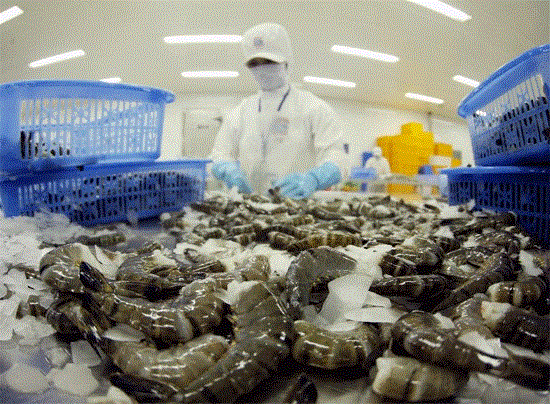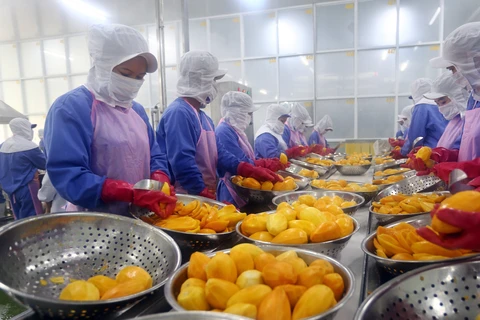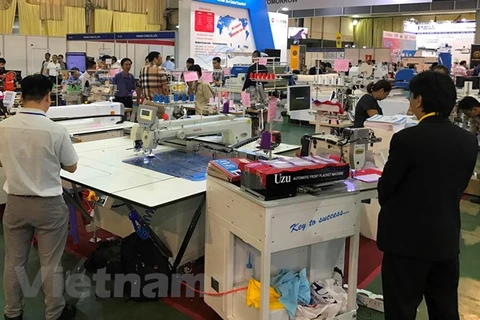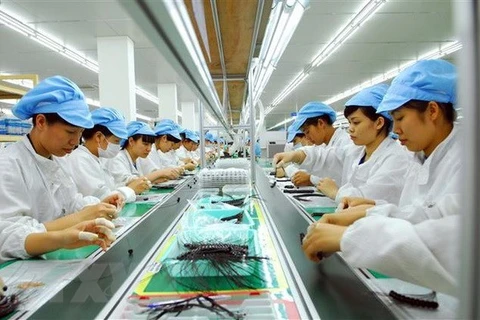Hanoi (VNA) - The Comprehensive and Progressive Agreement for Trans-Pacific Partnership (CPTPP) is opening up many opportunities for Vietnam’s agricultural products to reach global markets. However, agricultural products are the most vulnerable commodity when it comes to trade disputes.
Therefore, it was necessary to disseminate information on commitments in the CPTPP and implement a comprehensive and timely action plan to ensure long-term benefits for people, businesses and consumers, Minister of Industry and Trade Tran Tuan Anh said at a conference held in Hanoi on July 2.
As a new generation free trade agreement, the CPTPP is expected to have a comprehensive impact on Vietnam's economic and social activities. In particular, it will create opportunities to expand the market for many sectors (including agricultural products), especially the markets where Vietnam has no bilateral free trade agreements (FTA) such as Canada, Mexico, Peru and Australia thanks to preferential tariffs.
However, when the tariff barriers are removed, the technical barriers will be more stringent. The CPTPP is recognised as the agreement with the highest standards, most comprehensive and balanced in the agricultural sector, so the requirement is to improve agricultural cultivation and goods in line with international standards.
Therefore, the CPTPP poses many challenges to the consumption and distribution of Vietnamese agricultural products.
According to Thao Xuan Sung, Chairman of the Vietnam Farmers' Association, despite a number of achievements in Vietnam’s agriculture sector, the quality of agricultural production in general and the consumption and distribution of farm produce in particular are still limited and even weak.
In fact, the ratio of raw agricultural exports is still high; the quality and the number of agricultural value chains remain low; the way to organise agricultural production in the value chain is still sketchy and there is a lot of barriers between the domestic market and the world market. These are obstacles faced by Vietnamese agricultural products exported to the world market, especially large markets, requiring high quality.
Under the impact of FTAs, Sung said that the domestic agricultural market was witnessing increasing competitive pressure due to the increase in the number of agricultural products imported from foreign countries.
Among many agricultural products that Vietnam is still able to produce with good quality and quantity, it is difficult to compete with imported goods in terms of price and brand reputation.
Under the CPTPP, Vietnam’s agricultural business community is putting a lot of faith, as well as hope for large export markets, but there are many businesses wondering about competitive pressure when the production capacity of enterprises is still very limited.
In order to make good use of opportunities offered by the CPTPP, Pham Quynh Mai, Deputy Director of the MoIT’s Multilateral Trade Policy Department, recommended Vietnamese enterprises actively explore information about the CPTPP, especially information on tariff preferences on those products which Vietnam has strong export potential.
Enterprises should change their business thinking in the new context, putting pressure on competition as a driving force for innovation and development, she said.
In addition, enterprises also needed to actively co-operate with the partner markets of the agreement to strongly attract direct investment in Vietnam in order to make full use of capital and technology transfer from large corporations. This was also a good opportunity for businesses to participate more deeply in the regional and global supply chains, Mai added.-VNA
VNA
























